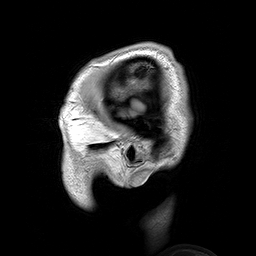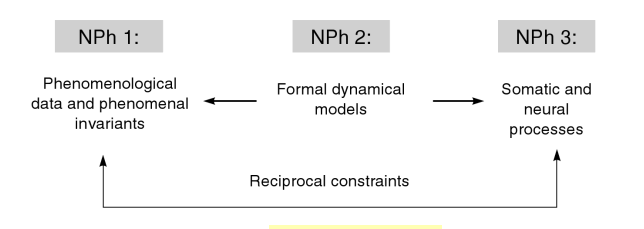Evan Thompson, one of the authors of 1991’s The Embodied Mind: Cognitive Science and Human Experience, in 2010 authored a sweeping, dare I say even magisterial, account of how science and philosophy should understand consciousness, embodiment, evolution, and neuroscience. Mind in Life: Biology, Phenomenology, and the Sciences of Mind is a work of serious ambition by a gentle-seeming man of hugely impressive learning:
“How is life related to the mind? The question has long confounded philosophers and scientists, and it is this so-called explanatory gap between biological life and consciousness that Evan Thompson explores in Mind in Life.
Thompson draws upon sources as diverse as molecular biology, evolutionary theory, artificial life, complex systems theory, neuroscience, psychology, Continental Phenomenology, and analytic philosophy to argue that mind and life are more continuous than has previously been accepted, and that current explanations do not adequately address the myriad facets of the biology and phenomenology of mind. Where there is life, Thompson argues, there is mind: life and mind share common principles of self-organization, and the self-organizing features of mind are an enriched version of the self-organizing features of life. Rather than trying to close the explanatory gap, Thompson marshals philosophical and scientific analyses to bring unprecedented insight to the nature of life and consciousness. This synthesis of phenomenology and biology helps make Mind in Life a vital and long-awaited addition to his landmark volume The Embodied Mind: Cognitive Science and Human Experience (coauthored with Eleanor Rosch and Francisco Varela).
Endlessly interesting and accessible, Mind in Life is a groundbreaking addition to the fields of the theory of the mind, life science, and phenomenology.”
Due to it’s scope, scale, and depth, I think many of us are taking time to absorb it the riches it contains. Below is an excerpt of what Thompson has to say about neurophenomenology, time consciousness, and dynamics:
“In recent years, scientists and philosophers interested in the temporal dynamics of consciousness have rediscovered Husserl’s analyses of time-consciousness (Lloyd 2002, 2003; van Gelder 1999b; Varela 1999). Varela in particular puts these analyses to use in his neurophenomenological approach to consciousness and offers a neurophenomenological account of time-consciousness as “an acid test of the entire neurophenomenological enterprise” (Varela 1999, p. 267). Varela formulates the “working hypothesis” of neurophenomenology in the following way: “Phenomenological accounts of the structure of experience and their counterparts in cognitive science relate to each other through reciprocal constraints” (1996. p. 343). By “reciprocal constraints” he means that phenomenological analyses can help guide and shape the scientific investigation of consciousness, and that scientific findings can in turn help guide and shape the phenomenological investigations. A crucial feature of this approach is that dynamic systems theory is supposed to mediate between phenomenology and neuroscience. NeurophenomenoIogy thus comprises three main elements (see Figure 11.2): (1) phenomenological accounts of the structure of experience; (2) formal dynamical models of these structural invariants; and (3) realizations of these models in biological systems. Given that time-consciousness is supposed to be an acid test of the neurophenomenological enterprise, we need to see whether phenomenological accounts of the structure of time-consciousness and neurodynamical accounts of the brain processes relevant to consciousness can be related to each other in a mutually illuminating way. This task is precisely the one Varela undertakes in his neurophenomenology of time-consciousness and in his experimental research on the neurodynamics of consciousness.
Varela’s strategy is to find a common structural level of description that captures the dynamics of both the impressional-retentional-protentional flow of time-consciousness and the large-scale neural processes thought to be associated with consciousness. We have already seen how the flow of time-consciousness is self-constituting. What we now need to examine is how this self-constituting flow is supposed to be structurally mirrored at the biological level by the self-organizing dynamics of large-scale neural activity.
There is now little doubt in cognitive science that cognitive acts, such as the visual recognition of a face, require the rapid and transient coordination of many functionally distinct and widely distributed brain regions. Neuroscientists also increasingly believe that moment-to moment, transitive (object-directed) consciousness is associated with dynamic, large-scale neural activity rather than any single brain region or structure (Cosmelli, Lachaux, and Thompson, 2007). Hence, any model of the neural basis of mental activity, including consciousness, must account for how large-scale neural activities can operate in an integrated or coherent way from moment to moment.
This problem is known as the large-scale integration problem (Varela et al. 2001). According to dynamical neuroscience, the key variable for understanding large-scale integration is not so much the activity of the individual neural components, but rather the nature of the dynamic links among them. The neural counterparts of mental activity are thus investigated at the level of collective variables that describe emergent and changing patterns of large-scale integration. One recent approach to defining these collective variables is to measure transient patterns of synchronous oscillations between different populations of neurons (Engel, Fries, and Singer 2001; Varela et al. 2001). According to Varela (1995, 1999), these synchrony patterns define a temporal frame of momentary and transient neural integration that corresponds to the duration of the present moment of experience.
Varela presents the reasoning behind this view in the form of three connected, but logically independent, working hypotheses (1994, 1999, pp 274-277):
Hypothesis I: For every cognitive act. there is a singular, specific neural
assembly that underlies its emergence and operation.
According to this hypothesis, the emergence of any cognitive act requires the rapid coordination of many different capacities (attention, perception, memory, motivation, and so on) and the widely distributed neural systems subserving them. The neurophysiological substrate for this large-scale coordination is assumed to be a neural assembly, which can be defined as a distributed subset of neurons with strong reciprocal connections.
In the context of large-scale integration, a dynamic neural assembly engages vast and disparate regions of the brain. There are reciprocal connections within the same cortical area or between areas at the same level of the network; there are also reciprocal connections that link different levels in different brain regions. Because of these strong interconnections across widely distributed areas, a large-scale neural assembly can be activated or ignited from any of its smaller subsets,whether sensorimotor or internal. These assemblies have a transient, dynamic existence that spans the time required to accomplish an elementary cognitive act and for neural activity to propagate through the assembly.
Various empirical and theoretical considerations suggest that the time-scale of such neurocognitive activity—whether it be a perception/ action state (such as an eye or head movement), passing thought or memory, or emotional appraisal—is in the range of a fraction of a second, roughly 250-500 milliseconds or more (see Dennett and Kinsbourne 1992; Poppel 1988). Varela (1999) calls this scale of duration the “1 scale” of large-scale integration and he distinguishes it from the “1/10 scale” of elementary sensorimotor and neural events (10—l00 milliseconds), and the “I0 scale” of descriptive-narrative assessments involving memory. During successive time intervals at the 1/ 10 and 1 scale, there is competition between different neural assemblies: when a neural assembly is ignited from one or more of its smaller subsets, it either reaches coherence or is swamped by the competing activations of other overlapping assemblies. If the assembly holds together after its activation, then one can assume it has a transitory efficacy.”



One thought on “Evan Thompson on core theories of neurophenomenology and time-consciousness”